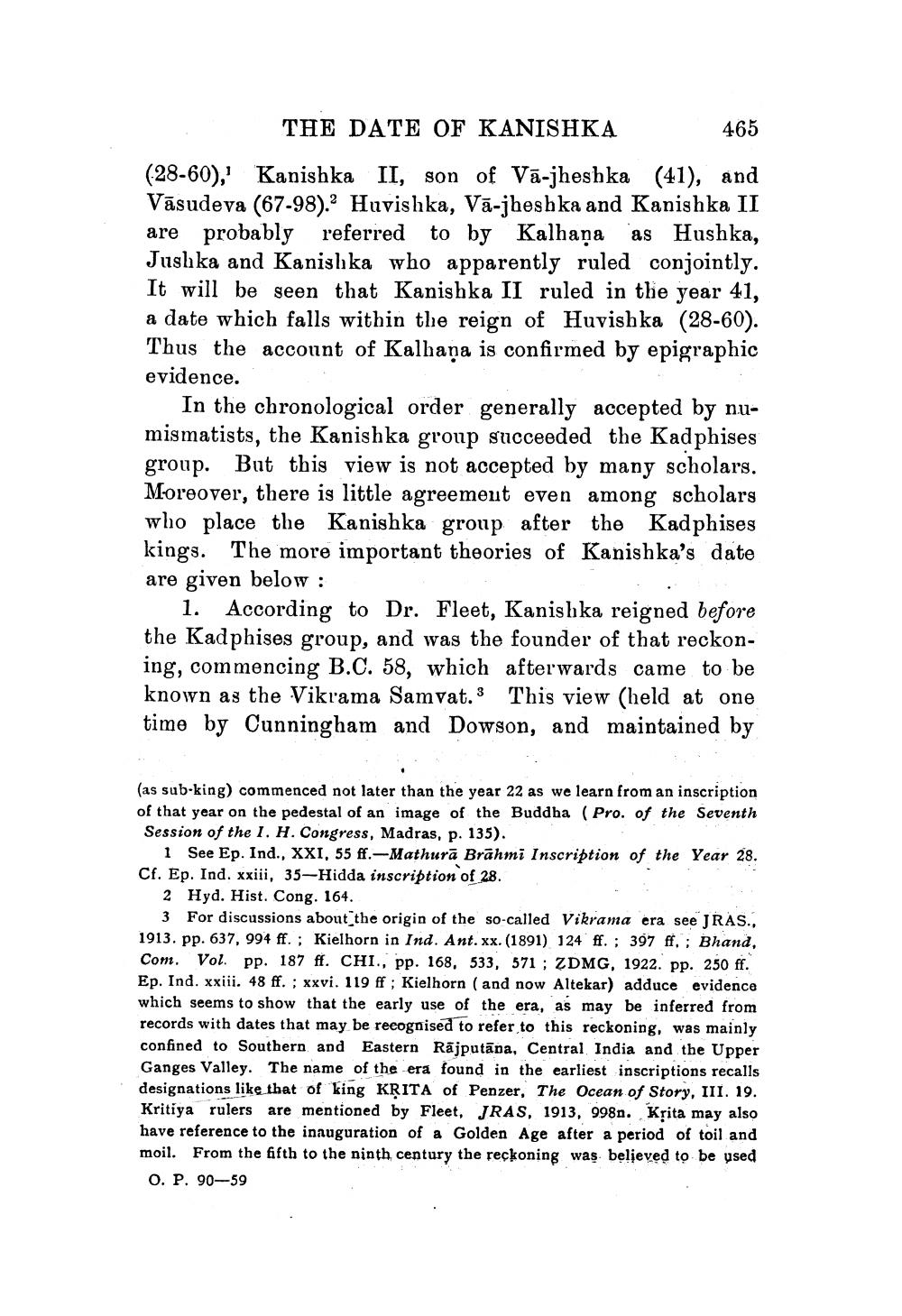________________
THE DATE OF KANISHKA
465 (28-60), Kanishka II, son of Vā-jheshka (41), and Vāsudeva (67-98).? Huvishka, Vā-jheshka and Kanishka II are probably referred to by Kalhaņa as Hushka, Jushka and Kanishka who apparently ruled conjointly. It will be seen that Kanishka II ruled in the year 41, a date which falls within the reign of Huvishka (28-60). Thus the account of Kalhana is confirmed by epigraphic evidence.
In the chronological order generally accepted by numismatists, the Kanishka group succeeded the Kadphises group. But this view is not accepted by many scholars. Moreover, there is little agreemeut even among scholars who place the Kanishka group after the Kadphises kings. The more important theories of Kanishka's date are given below :
1. According to Dr. Fleet, Kanishka reigned before the Kadphises group, and was the founder of that reckoning, commencing B.C. 58, which afterwards came to be known as the Vikrama Samvat. This view (held at one time by Cunningham and Dowson, and maintained by
(as sub-king) commenced not later than the year 22 as we learn from an inscription of that year on the pedestal of an image of the Buddha (Pro. of the Seventh Session of the 1. H. Congress, Madras, p. 135).
1 See Ep. Ind., XXI, 55 ff.—Mathurā Brāhmi Inscription of the Year 28. Cf. Ep. Ind. xxiii, 35-Hidda inscription of 28.
2 Hyd. Hist. Cong. 164.
3 For discussions about the origin of the so-called Vikrama era see JRAS., 1913. pp. 637, 994 ff. ; Kielhorn in Ind. Ant. xx. (1891) 124 ff. ; 397 ff. ; Bhand, Com. Vol. pp. 187 ff. CHI., pp. 168, 533, 571 ; ZDMG, 1922. pp. 250 ff. Ep. Ind. xxiii. 48 ff. ; xxvi. 119 ff; Kielhorn (and now Altekar) adduce evidence which seems to show that the early use of the era, as may be inferred from records with dates that may be recognised to refer to this reckoning, was mainly confined to Southern and Eastern Rājputāna, Central India and the Upper Ganges Valley. The name of the era found in the earliest inscriptions recalls designations like that of king KĶITA of Penzer, The Ocean of Story, III. 19. Kritiya rulers are mentioned by Fleet, JRAS, 1913, 998n. Krita may also have reference to the inauguration of a Golden Age after a period of toil and moil. From the fifth to the ninth century the reckoning was believed to be used O. P. 90-59




